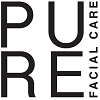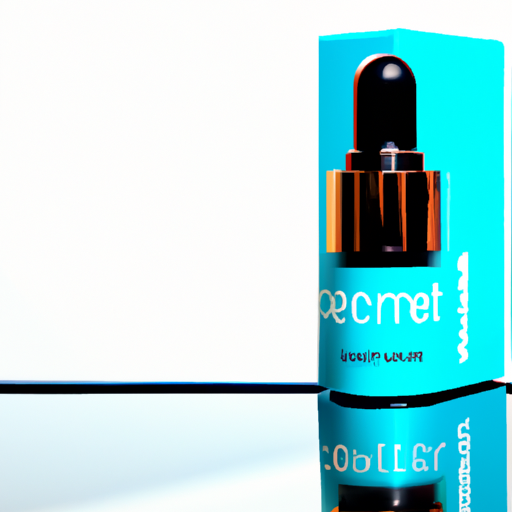You’ve just finished shaving, but instead of feeling fresh and smooth, your skin is left red, irritated, and uncomfortable. Don’t worry, we’ve got you covered. In this article, we’ll explore some simple yet effective ways for men to soothe their irritated skin after shaving. From using the right products to implementing a proper post-shave routine, we’ll help you achieve a calm and irritation-free complexion in no time. So, say goodbye to razor burn and hello to smooth and healthy skin with these expert tips.
Table of Contents
ToggleUse a Gentle Shaving Cream or Gel
Choose the Right Shaving Cream or Gel
When it comes to shaving, choosing the right shaving cream or gel can make all the difference in preventing irritation and achieving a smooth shave. Look for a product specifically designed for sensitive skin, as these formulations are typically gentler and less likely to cause irritation. Avoid products with harsh chemicals or fragrances, as these can strip the skin of its natural oils and lead to dryness and redness.
Apply a Thin Layer of Shaving Cream or Gel
Once you’ve found the perfect shaving cream or gel, it’s important to apply it properly to maximise its effectiveness. Start by wetting your face with warm water, as this will help to soften the hair and open up the pores. Then, apply a thin, even layer of shaving cream or gel to your face. Using too much product can clog the razor and lead to a less precise shave, so be sure to apply a thin layer and spread it evenly over the areas you’ll be shaving.
Use a Shaving Brush for Application
To further enhance your shaving experience and reduce the risk of irritation, consider using a shaving brush to apply your shaving cream or gel. A shaving brush helps to create a rich lather, which helps to lubricate the skin and hair, making for a smoother shave. Additionally, the gentle exfoliation provided by a shaving brush can help to lift the hair and prevent ingrown hairs. To use a shaving brush, wet it with warm water and swirl it in your shaving cream or gel until a lather forms. Then, apply the lather to your face in circular motions, ensuring that it covers all areas to be shaved.
Prep the Skin Before Shaving
Take a Warm Shower
One of the most effective ways to prepare your skin for shaving is by taking a warm shower before you start the process. The warm water will help to soften the hair and open up the pores, making it easier for the razor to glide smoothly across the skin. In addition to softening the hair, a warm shower also helps to remove any dirt or impurities from the skin, reducing the risk of irritation or infection.
Exfoliate the Skin
Exfoliating the skin is an essential step in any shaving routine, as it helps to remove dead skin cells and other debris that can clog the razor and lead to irritation. Use a gentle exfoliating scrub or a facial brush to gently massage the skin in circular motions, paying close attention to areas with thick or coarse hair. This will help to lift the hair and provide a smoother surface for the razor to glide across. Remember to be gentle and avoid applying too much pressure, as this can cause unnecessary irritation.
Use a Pre-Shave Oil
For an added layer of protection and lubrication, consider using a pre-shave oil before applying your shaving cream or gel. Pre-shave oils help to create a protective barrier between the razor and the skin, reducing friction and minimising the risk of irritation. They also help to soften the hair and moisturise the skin, resulting in a closer and more comfortable shave. To use a pre-shave oil, simply apply a few drops to your fingertips and massage it onto your face in circular motions. Allow the oil to absorb for a minute or two before moving on to the next step.
Use a Sharp Razor
Choose a High-Quality Razor
Investing in a high-quality razor is crucial for achieving a smooth and irritation-free shave. Look for a razor with multiple blades, as these tend to provide a closer shave and reduce the need for repeated passes over the same area. Additionally, consider opting for a razor with a pivoting head, as this allows the blade to glide effortlessly across the contours of your face, minimising the risk of nicks and cuts. Replace the blades as soon as they start to dull or show signs of wear and tear, as using a dull blade can lead to increased friction and irritation.
Replace Blades Regularly
Even the best razor blades will eventually become duller and less effective over time. Using a dull blade not only increases the risk of irritation but can also cause uneven cuts, resulting in a less satisfactory shave. To ensure a smooth and comfortable shave, make it a habit to replace your razor blades regularly. A general guideline is to replace the blade after every five to seven shaves or as soon as you notice a decline in performance.
Use the Right Shaving Technique
Using the right shaving technique is essential for minimising irritation and achieving a close shave. Start by holding the razor at a 30-degree angle and using short, light strokes in the direction of hair growth. Avoid applying too much pressure, as this can lead to cuts and irritation. Rinse the blade frequently to remove any hair and shaving cream buildup, as this can affect the razor’s performance. Remember to shave with the grain first before attempting any against the grain passes, as shaving against the grain can increase the risk of irritation.
Shave with the Grain
Determine the Direction of Hair Growth
Before you start shaving, it’s important to determine the direction of your hair’s growth. This will help you to shave with the grain, which is the direction in which the hair grows naturally. Shaving with the grain reduces the risk of irritation and ingrown hairs, as it allows the razor to glide smoothly over the hair follicles. Take note of the hair growth pattern on different areas of your face, as it may vary. Most of the time, the hair on the cheeks and chin grows downward, while the hair on the neck may grow in various directions.
Shave in the Same Direction
Once you’ve determined the direction of your hair’s growth, make sure to shave in the same direction. Shaving against the grain can cause the razor to tug at the hair, resulting in irritation, redness, and even ingrown hairs. By shaving with the grain, you allow the razor to cut the hairs cleanly and effortlessly, providing a more comfortable and irritation-free shaving experience. If you’re unsure about the direction of hair growth in certain areas, it’s always better to err on the side of caution and shave with the grain.
Avoid Repeated Passes
While it may be tempting to go over the same area multiple times to achieve an ultra-close shave, this can actually increase the risk of irritation and razor burn. Repeated passes over the same area can cause unnecessary friction and trauma to the skin, leading to redness, inflammation, and even cuts. Instead, focus on shaving in a precise and controlled manner, making sure to cover all areas evenly with a single pass. If there are any stray hairs left behind, it’s better to go back later after applying more shaving cream or gel rather than repeatedly going over the same spot.
Rinse with Cold Water
Close the Pores with Cold Water
After you’ve finished shaving, it’s important to rinse your face with cold water. Cold water helps to close the pores, which can become enlarged during shaving. Closing the pores reduces the risk of dirt and bacteria entering the freshly shaved skin, minimising the chances of irritation or infection. Simply splash cold water onto your face or use a clean washcloth soaked in cold water to rinse away any remaining shaving cream or gel.
Remove any Remaining Residue
In addition to closing the pores, rinsing your face with cold water also helps to remove any remaining shaving cream or gel residue. Leaving these products on the skin can lead to clogged pores and increased risk of irritation. Gently pat your face dry with a clean towel after rinsing, making sure to remove any excess moisture.
Pat Dry Gently
Avoid Rubbing the Skin
After rinsing your face with cold water, it’s essential to pat dry your skin gently. Avoid rubbing the towel vigorously against your face, as this can cause unnecessary friction and irritation. Instead, lightly press the towel against your skin and dab it gently to absorb the excess moisture. Being gentle with your skin during this step helps to prevent further irritation and ensures that your skin remains calm and soothed after shaving.
Use a Clean, Soft Towel
To prevent any transfer of bacteria or dirt onto your freshly shaved skin, it’s important to use a clean towel every time you pat dry. Ensure that the towel is soft and made of a material that won’t agitate your skin. Avoid using rough or abrasive towels, as these can cause friction and irritation. If possible, designate a separate towel specifically for face drying after shaving to maintain optimal hygiene and minimise potential irritants.
Apply an Aftershave Balm
Choose an Aftershave Balm with Soothing Ingredients
After you’ve dried your face, applying an aftershave balm is an essential step in soothing and hydrating your skin. Look for an aftershave balm that contains soothing ingredients such as aloe vera, chamomile, or witch hazel. These ingredients help to calm the skin, reduce redness, and minimise inflammation. Avoid products that contain alcohol, as alcohol can further dry out the skin and cause irritation.
Apply a Small Amount of Balm
When applying aftershave balm, less is more. Use a small amount of the product, about the size of a dime, and gently spread it over your face and neck using your fingertips. Be sure to apply it to any areas that may feel particularly sensitive or irritated. Remember, the goal is to provide a thin, protective layer that absorbs into the skin without leaving a greasy or heavy residue.
Gently Massage into the Skin
To maximise the benefits of your aftershave balm and promote its absorption, gently massage it into your skin using upward circular motions. This helps to stimulate blood flow, which can aid in the healing process and promote healthy skin. Take the time to enjoy this step, as it also offers a moment of relaxation and self-care.
Avoid Alcohol-based Aftershaves
Alcohol can Cause Irritation
While alcohol-based aftershaves may provide a cooling sensation, they can actually do more harm than good, especially for those with sensitive or irritated skin. Alcohol is a drying agent and can strip the skin of its natural oils, leading to further dryness and irritation. For this reason, it’s best to avoid using alcohol-based aftershaves, especially if you’re prone to post-shave redness or inflammation.
Opt for Alcohol-free Aftershaves
Instead of alcohol-based aftershaves, opt for products that are alcohol-free. These formulations are typically gentler on the skin and will help to soothe and hydrate the skin after shaving. Look for aftershaves that contain natural hydrating ingredients, such as hyaluronic acid, shea butter, or vitamin E. These ingredients will not only help to soothe the skin but also provide much-needed moisture and nourishment.
Use a Soothing moisturiser
Select a moisturiser with Calming Properties
After you’ve applied your aftershave balm, it’s important to follow up with a soothing moisturiser to lock in moisture and further nourish the skin. Look for a moisturiser specifically designed for sensitive or irritated skin, as these products are formulated to calm and hydrate the skin. Ingredients such as aloe vera, chamomile, and oat extract are known for their soothing and anti-inflammatory properties, making them ideal for post-shave skincare.
Apply moisturiser to Hydrate the Skin
To apply your moisturiser, take a small amount and gently massage it into your face and neck using upward circular motions. Focus on any areas that feel particularly dry or irritated. Pay attention to the ingredients and choose a moisturiser that is lightweight and easily absorbed, as heavy or greasy products may clog the pores and exacerbate irritation. Moisturising your skin after shaving will help to replenish lost moisture, maintain skin barrier function, and promote a healthy and smooth complexion.
Avoid Touching or Scratching the Irritated Skin
Keep Hands away from the Face
After you’ve completed your shaving routine and applied your post-shave products, it’s important to resist the temptation to touch or scratch your freshly shaved skin. Touching your face with your hands can transfer bacteria and oils onto the skin, increasing the risk of infection or further irritation. It’s best to keep your hands away from your face, or if you must touch it, make sure your hands are clean.
Avoid Scratching the Irritated Area
Even if your freshly shaved skin feels itchy or irritated, it’s important to refrain from scratching or rubbing the affected area. Scratching can damage the skin’s protective barrier and potentially introduce bacteria, leading to infection. Instead, try using a cold compress or applying a soothing product specifically designed for itchy or irritated skin. If the irritation persists or worsens, it’s best to consult a dermatologist for further guidance.
Following these steps and incorporating a proper shaving routine into your daily or weekly grooming regimen can significantly help soothe and prevent irritated skin after shaving. Remember, taking care of your skin is not confined to the shaving process alone but also includes pre-shave and post-shave care. By using the right products and techniques and maintaining a gentle and consistent approach, you can achieve a smooth, comfortable, and irritation-free shaving experience that leaves your skin looking and feeling its best. So, gear up with the right tools and products and enjoy a shaving routine that will leave your skin refreshed, rejuvenated, and irritation-free!






